Rush hour. China's sea power
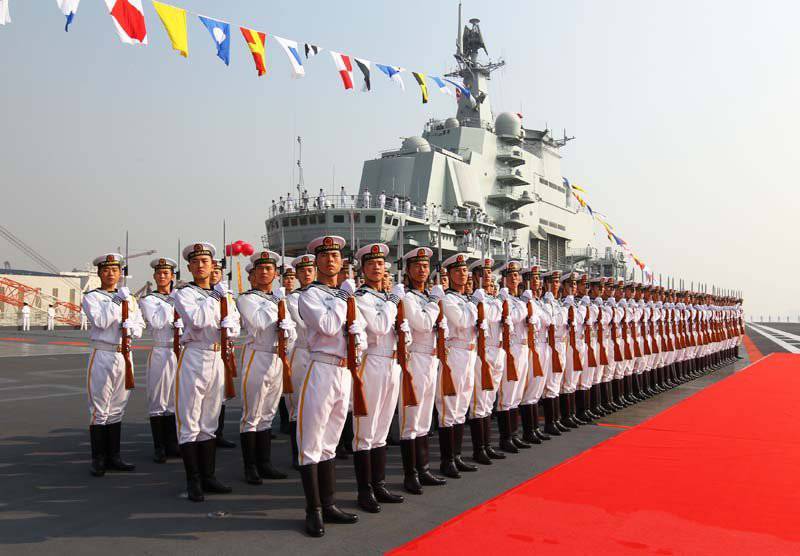
The American Nimitz class aircraft carrier was hit by two hits of Dongfeng 21 ballistic missiles. The warheads of rockets at a speed five times faster than the speed of sound pierced the flight armored deck and the six lower decks of the aircraft carrier, destroying all posts, cockpits and storages in its path. With a terrible blow, the main pipe-toothed aggregates were thrown out of their seats - the once formidable warship was now powerlessly dead in the middle of the ocean, swallowed by radioactive steam from the broken contours of a nuclear steam generating plant. Through bursting fuel lines whip elastic jets of kerosene, instantaneously ignite from sparks of damaged electrical wiring. The roar of the flames of burning aviation fuel resounds in the steel womb of the doomed ship, and cold water rushing and bubbling along the lower decks of the aircraft carrier, cold water rolls over - reaching the bottom, the warheads of Chinese missiles turned upside down the armored flooring.
The “sinking” of an American aircraft carrier took place last year in the Gobi Desert, on the border with Mongolia. Chinese rocket men fired at a concrete platform imitating the shape of an American super-ship.
According to Chinese sources, the “Dongfeng 21 mod. D ”is an integral part of the anti-ship rocket and space system, from orbital reconnaissance satellites and the ground-based rocket complex itself, capable of destroying sea targets at a distance of 2700 kilometers from the coast of the People's Republic of China. The composition of the space group includes three types of satellites:
- Yaogan VII optical-electronic reconnaissance satellite,
- Yaogan VIII active radar satellite,
- six satellites of electronic reconnaissance Yaogan IX and Yaogan XVI.
The onboard equipment of the RTR satellites conducts radio interception of negotiations between American sailors and, taking into account the time delay, determines the approximate location of the squadron of the US Navy. To clarify the coordinates of an aircraft carrier, data from optical or radar data acquisition equipment is used. According to the Chinese, their orbital group is now in its infancy and will continue to evolve over time.
The most questions are caused by the behavior of warheads of rockets in the final segment of the trajectory — to hit a moving aircraft carrier, phenomenal accuracy and continuous correction using external means are required. The Dunfen warhead enters the dense atmosphere at a speed ten times faster than the speed of sound! How the Chinese managed to solve the problem of communication with the apparatus, flying in a continuous cloud of hot plasma - still remains a mystery.
"Chinese service" was appreciated abroad. Former US Secretary of Defense Robert Gates openly stated that “among all the Chinese developments, the fifth-generation aircraft design and the Dongfeng-21 anti-ship complex are of the greatest concern. The Washington Times newspaper, in turn, led analysts to say that the Chinese ballistic missile is “the first threat to the global dominance of the US Navy since the end of the Cold War.”
Chinese aircraft carriers
Before building their own aircraft carrier, the Chinese purchased four foreign aircraft carriers to study:
- The former Australian aircraft carrier "Melbourne". An old British ship launched in the 1945 year and served a surprisingly long time in the Navy of the two countries. Was sold for cutting to China in 1985 year. The Chinese dismantled the "Melbourne" to screw and thoroughly acquainted with the design of the aircraft carrier.
- Former Soviet aircraft carrying cruisers of 1143 and 1143.2 projects - “Kiev” and “Minsk”. Strange hybrids with rocket armament and a short flight deck designed for the base of aircraft with vertical takeoff and landing. Chinese experts have carefully studied the design of the Soviet aircraft-carrying cruisers and made the appropriate conclusions. From the construction of the Chinese analogues of "Kiev" and "Minsk" refused.
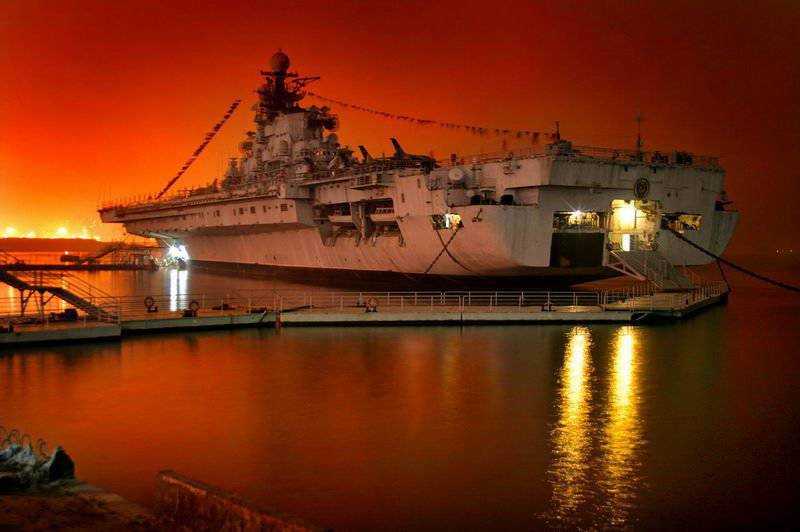
- the unfinished Soviet aircraft carrying cruiser "Varyag" with a solid flight deck and a bow ramp. The ship hull with 67% ready was sold to Chong Lot Travel Agency Ltd, a Chinese entertainment corporation, for only $ 20 million dollars (1 / 700 from the price of a modern American aircraft carrier like Ford!) With the promise to turn the ship into a floating casino.
The Americans were the first to sound the alarm - for a year and a half, Turkey, under pressure from the USA, broke the comedy, refusing to let the Varyag core pass through the Bosphorus. However, the Chinese showed exceptional perseverance - in March 2002, Varyag nevertheless arrived in Dalian (the former name is Far, the legendary place of the Russian-Japanese war, in 40 km from Port Arthur). Ten years later, September 25 2012, the former Soviet aircraft carrier was accepted into the Navy of the People’s Liberation Army of China under the name "Liaoning", becoming the largest warship of the PLA Navy.
But, despite the undoubted success, the Chinese sailors and sea pilots have much to learn - now they have everything: an aircraft carrier, a J-15 carrier-based aircraft (an unlicensed copy of the Su-33 multirole fighter), and a crew of carrier-based pilots aviation, funds for the construction of a second ship and all the necessary technology. They even learned to land on a ship! But the Chinese do not have the main thing - the experience of using this system in combat conditions. And indeed, the experience of operating an aircraft carrier and carrier-based aircraft leaves much to be desired. However, the Chinese have repeatedly proved themselves to be capable students, and many foreign experts agree that Liaoning is not so much a combat unit as a training ground for developing the necessary skills and technologies.
The second question related to the Chinese aircraft carrier is still open - where did the brave Chinese sailors gather on it and with whom are they going to fight? The main geopolitical adversary - Japan, is located in the area of operation of land-based aircraft. Is the adversary Russia? But China borders on Russia, and therefore has a common 3000-kilometer border; it obviously requires a completely different technique than aircraft carriers. Putting one Liaoning against 10 US Navy carriers is crazy. Using an aircraft carrier against Vietnam, with which China has a number of small insoluble problems? In this case, the capacity of the aircraft carrier looks clearly excessive. It turns out that Liaoning is nothing more than a symbol of the increasing power of the Chinese fleet, a status ship for a proud demonstration of the flag of a superpower.
Destroyers and frigates
The PLA Navy has twenty-six destroyers, divided by purpose into three large groups: multipurpose destroyers, anti-submarine destroyers and air defense destroyers. Obviously, the Chinese shipbuilders have so far failed to build a universal destroyer destroyer that fully satisfies the basic requirements of the PLA Navy application concept. A significant part of the ships - nine units - outdated destroyers (frigates) Type 051, with a small displacement (3600 tons) and the same outdated weapons.
Four more ships, so-called. "Anti-ship destroyers" - the destroyers of the project 956 from the Russian Navy, equipped with a deadly complex "Mosquito". Serious ships for serious tasks.
Very interesting is the modern project of the Chinese destroyer Type 51С (built by the 2 of the ship) - a small 7000-ton squadron destroyer with predominantly Soviet / Russian weapons: the Chinese managed to place on board the Type 51С 48 anti-aircraft missiles of the C-300FM complex, as well as 8 anti-ship missiles and anti-ship missiles and anti-ship missiles and anti-ship missiles. additional weapons - from a helicopter hangar to an artillery system caliber 100 mm. It turned out cheap, without any frills, but quite modern and efficient ship, capable of providing high-quality air defense squadron in the open sea.
Recently, the Chinese almost annually build several new destroyers. And all for different projects! On the one hand, this is a very dubious decision, complicating the operation of such a "ragtag" fleet. However, the quality of Chinese ships is rapidly increasing over and over again, which is bound to cause some concern.
The Chinese also have a whole armada of cool frigates - 48 units. From small and old Type 53 (built in 70-s) to the most modern stealth frigates Type 54A: a wide range of anti-ship and anti-submarine weapons, supported by a block of vertical launchers on 32 anti-aircraft missiles HQ-16 (similar to the Russian Buk air defense system of the middle radius of action). The most surprising thing is that in the previous six years, the Chinese have “riveted” 16 of such ships with a displacement of 4000 each, and six more are in varying degrees of readiness. At the same time the construction of ships do not exceed two or three years!
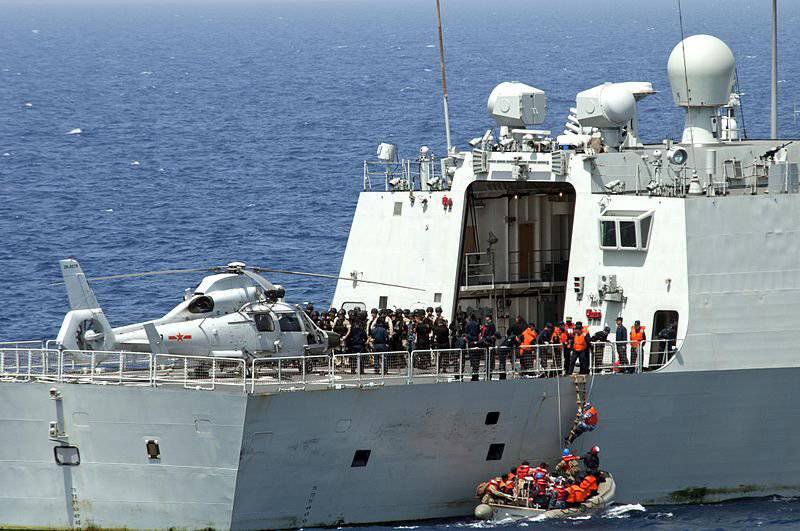
The Chinese also have their own Mistrals - three universal amphibious assault helicopter carriers, resembling in their outlines the Dutch UDC of the Rotterdam type. They do not have a solid flight deck; instead, in the middle part of the hull there is a developed superstructure and a hangar on the 4 helicopter. In the stern, under the flight deck, there is a large dock for amphibious assault boats. And for the fire support of the landing force, four 50-barrel barreled rocket launcher systems are deployed onboard the UDC.
Finally, the “most delicious” is the underwater component of the PLA Navy.
China has a large fleet of 60 submarines, different in type, age, purpose and type of power plant. Among the Chinese submarines there are even such “monsters” as the Soviet diesel submarines of the 633 project (hello from the fifties!), Built, in turn, on the basis of the German trophy submarine of type XXI. Seventeen diesel-electric submarines of this type are still used for training purposes as part of the PLA Navy.
If the recollection of the 633 project (or “Ming” in Chinese) can only cause a smile, the next paragraph will certainly unpleasantly surprise the reader: the warm waters of the South China Sea are plied by four strategic nuclear submarines. Each with twelve Junlan-2 ballistic missiles. In other words, the People’s Republic of China can independently organize a world nuclear war - it has enough boats, missiles and charges.
Also in the fleet there is another old diesel submarine equipped with three ballistic missiles (built according to drawings received in 1959 from the USSR) - currently it is used as a test platform for testing SLBMs.
And that is not all! Since 1970, the Chinese have managed to build 7 multipurpose nuclear submarines, two more are now in a high degree of readiness. And if the old boats Type 091 "Han" nevertheless, objectively, were a pitiful similarity to the Soviet and American nuclear submarines (two of them have already been withdrawn from the fleet), then the declared characteristics of modern submarines Type 093 "Scheng" are already at the level of the best world analogues.
It is difficult to judge what is hidden in the depths of the ocean, and to draw any conclusions based on statements by the Chinese side, however, given the rapid qualitative progress of the “visible” surface component of the PLA Navy, the Chinese have a fairly strong nuclear submarine fleet.
China is continuously improving the quantitative and qualitative components of its navy. And the most alarming thing is that the increase in the number of ships of the PLA Navy is determined in time by no means a direct relationship, in recent years this process has taken on an obvious avalanche-like character.
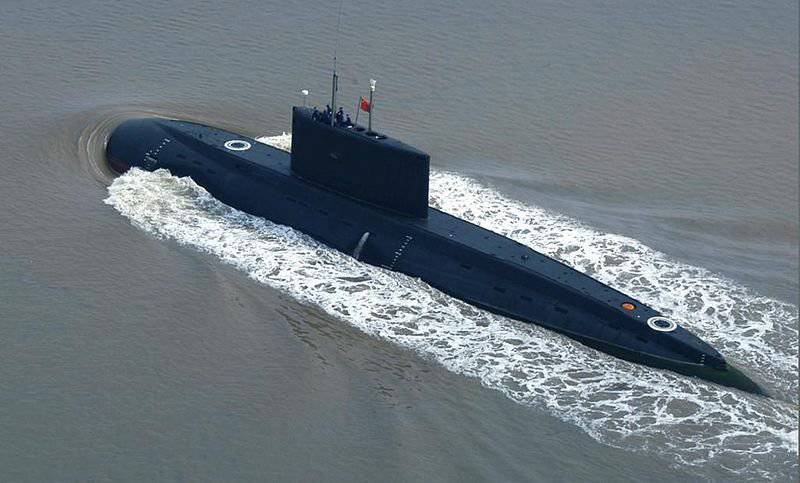
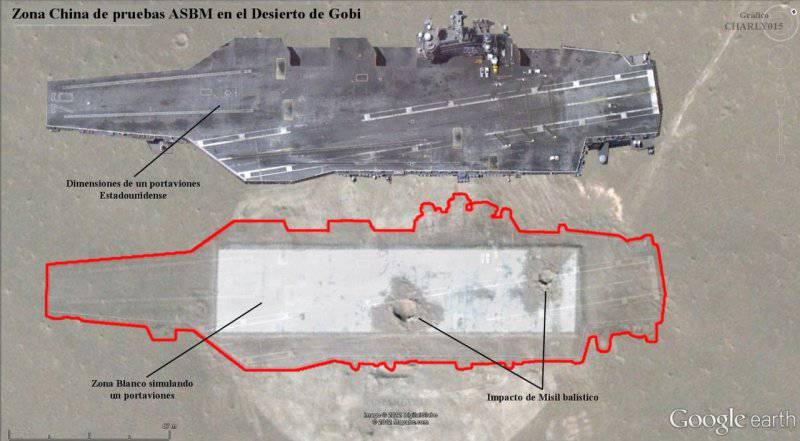
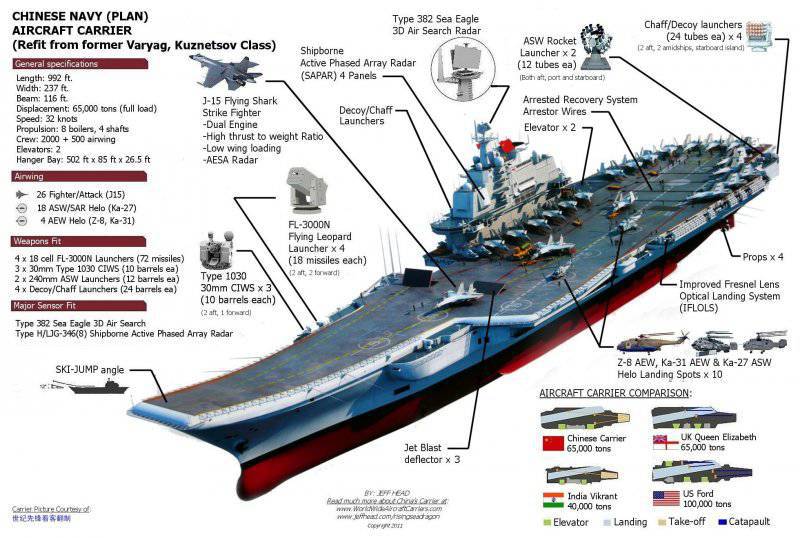
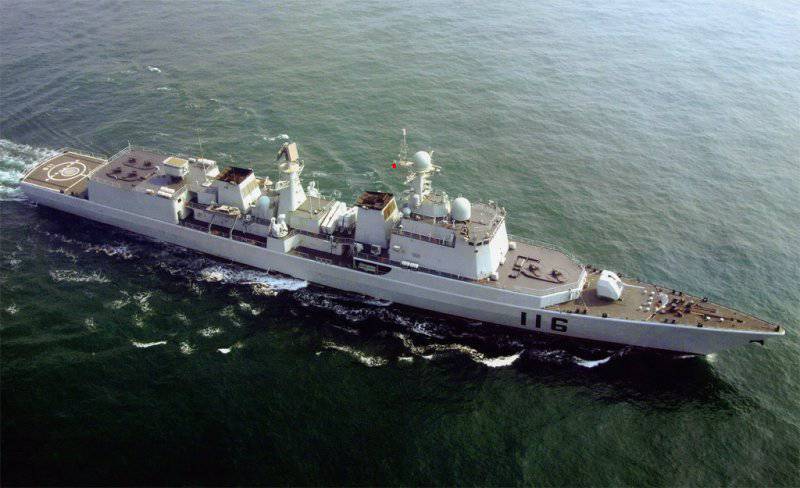
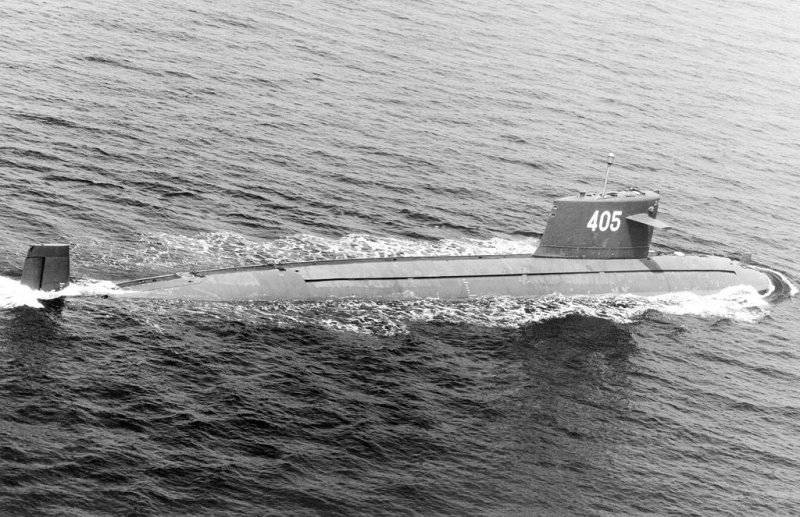
Information